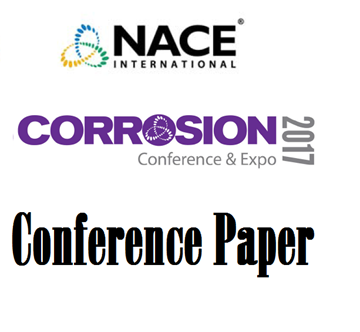Search
Individual Conference Papers
View as
Sort by
Display
per page
Evaluation Of Dead Leg Piping with Internal Corrosion at A Salt Dome Natural Gas Storage Facility
Product Number:
51323-19041-SG
Publication Date:
2023
$20.00
Evaluation of Degradation of a Fiberglass Pipe Exposed to Two Industrial Fluids
Product Number:
51317--8985-SG
ISBN:
8985 2017 CP
Publication Date:
2017
$20.00
Evaluation of Eco-Friendly Chemical Pre-Treatment on Aluminum Alloys in Oceanic Environments
Product Number:
51219-203-SG
Publication Date:
2019
$20.00
Evaluation of Embedded Sacrificial Anode Probe for Use in Concrete Repair
Product Number:
51319-13097-SG
Publication Date:
2019
$20.00
Evaluation of Erosion-Corrosion Behavior of N80 Steel Under High Velocity Wet Gas Condition
Product Number:
51319-13526-SG
Publication Date:
2019
$20.00
Evaluation of Galvanic Coupling of Lean Duplex Stainless Steel and Carbon Steel in Concrete Structures in Marine Environment
Product Number:
51319-13334-SG
Publication Date:
2019
$20.00
Evaluation Of Girth-Welded 22Cr Duplex Stainless-Steel Piping For Susceptibility To Environmentally Assisted Cracking (EAC), Pitting, And General Corrosion In A Sour Environment
Product Number:
51321-16725-SG
Publication Date:
2021
$20.00
Evaluation of Glass Reinforced Plastic for Post Combustion CO2 Capture Amine Service
Product Number:
51323-18832-SG
Publication Date:
2023
$20.00
Evaluation of High Ratio Co-Polymerized Calcium Sulfonate (HRCSA) Addressing Crevice Corrosion for Structural Steel
Product Number:
51220-260-SG
Publication Date:
2020
$20.00
Evaluation of Hydrogen Embrittlement and Sulphide Film Formation in an API 5L X80 Steel Base Metal A
Product Number:
51319-13404-SG
Publication Date:
2019
$20.00
Evaluation Of Hydrogen Embrittlement Of Nickel-Based Alloys In Cesium Formate With H2S/CO2
Product Number:
51322-18024-SG
Publication Date:
2022
$20.00
Evaluation of Hydrogen Embrittlement Resistance of 41XX Cr-Mo steels, 13Cr Stainless Steel in High Pressure Hydrogen Environment
Product Number:
51323-18971-SG
Publication Date:
2023
$20.00












